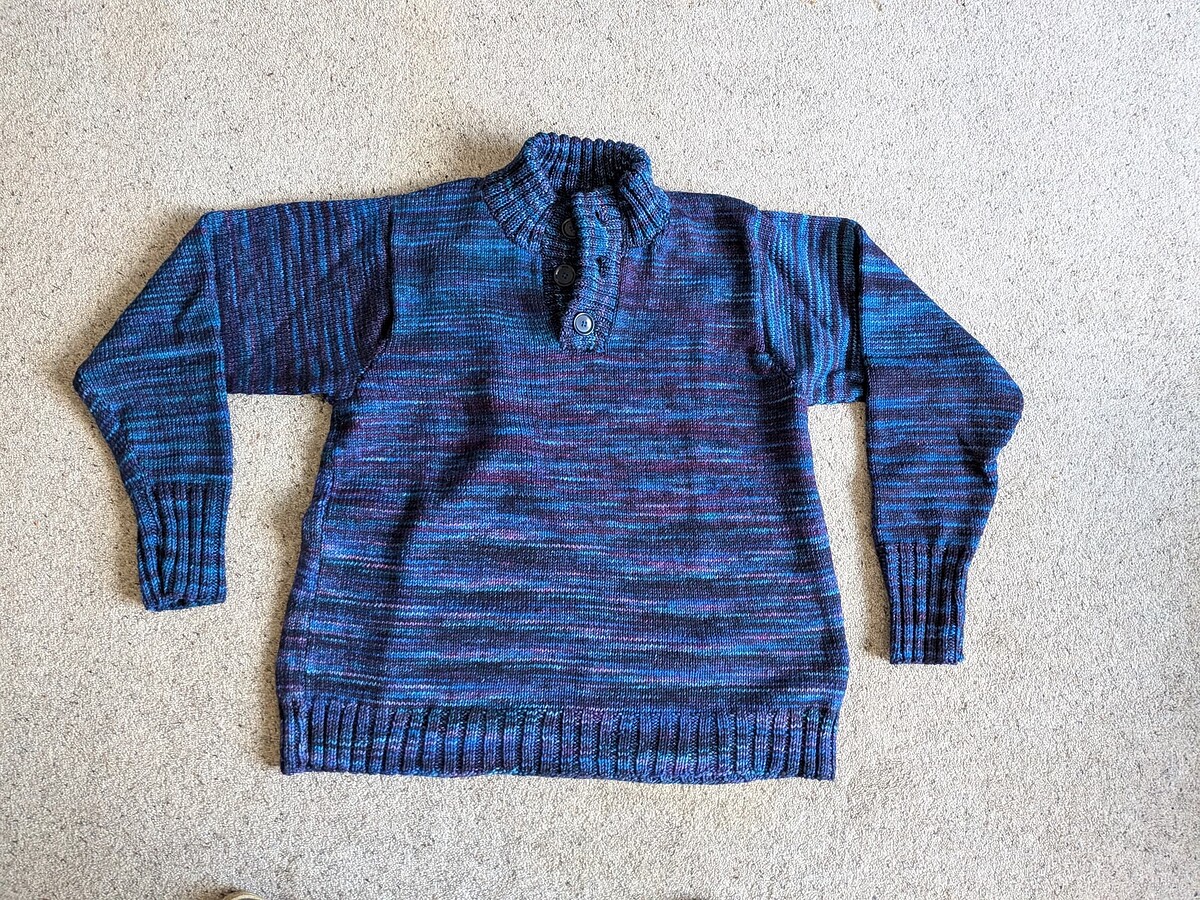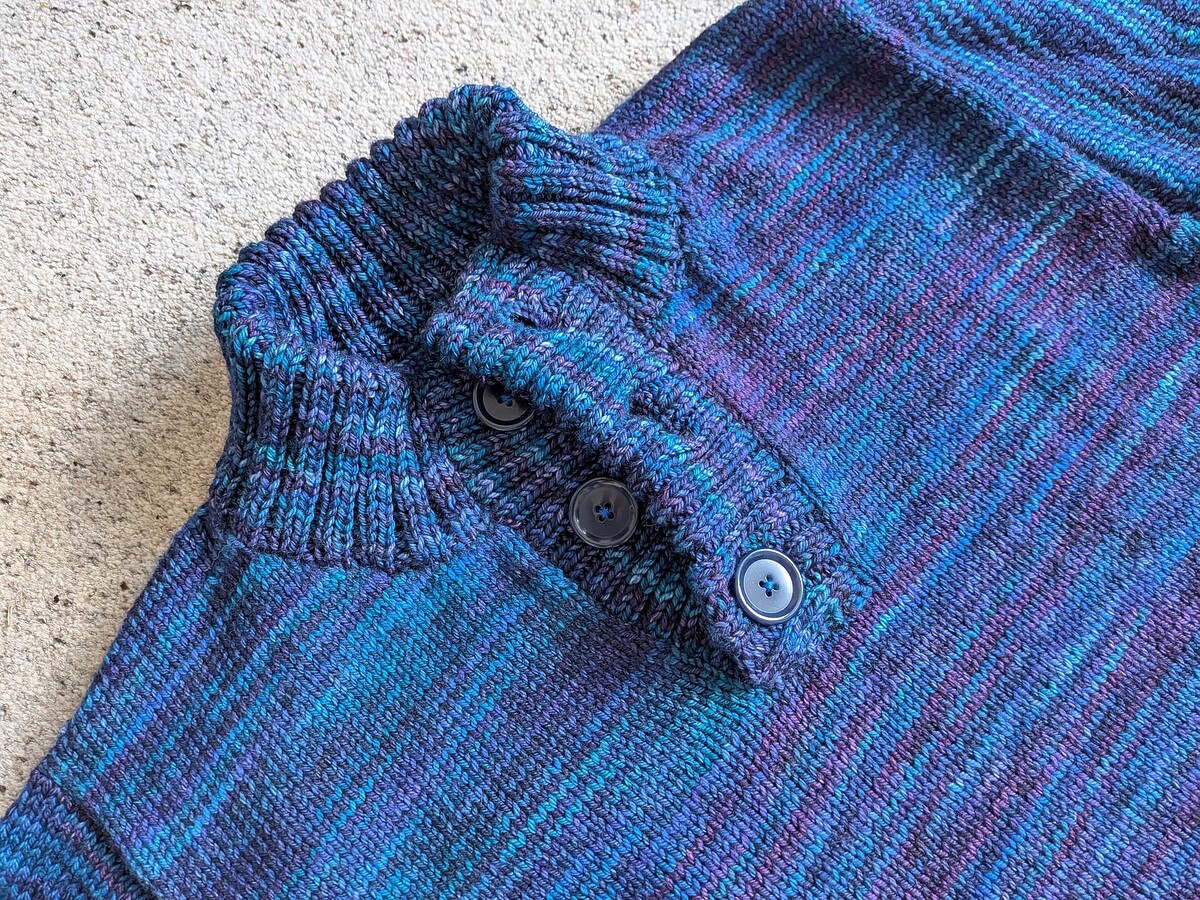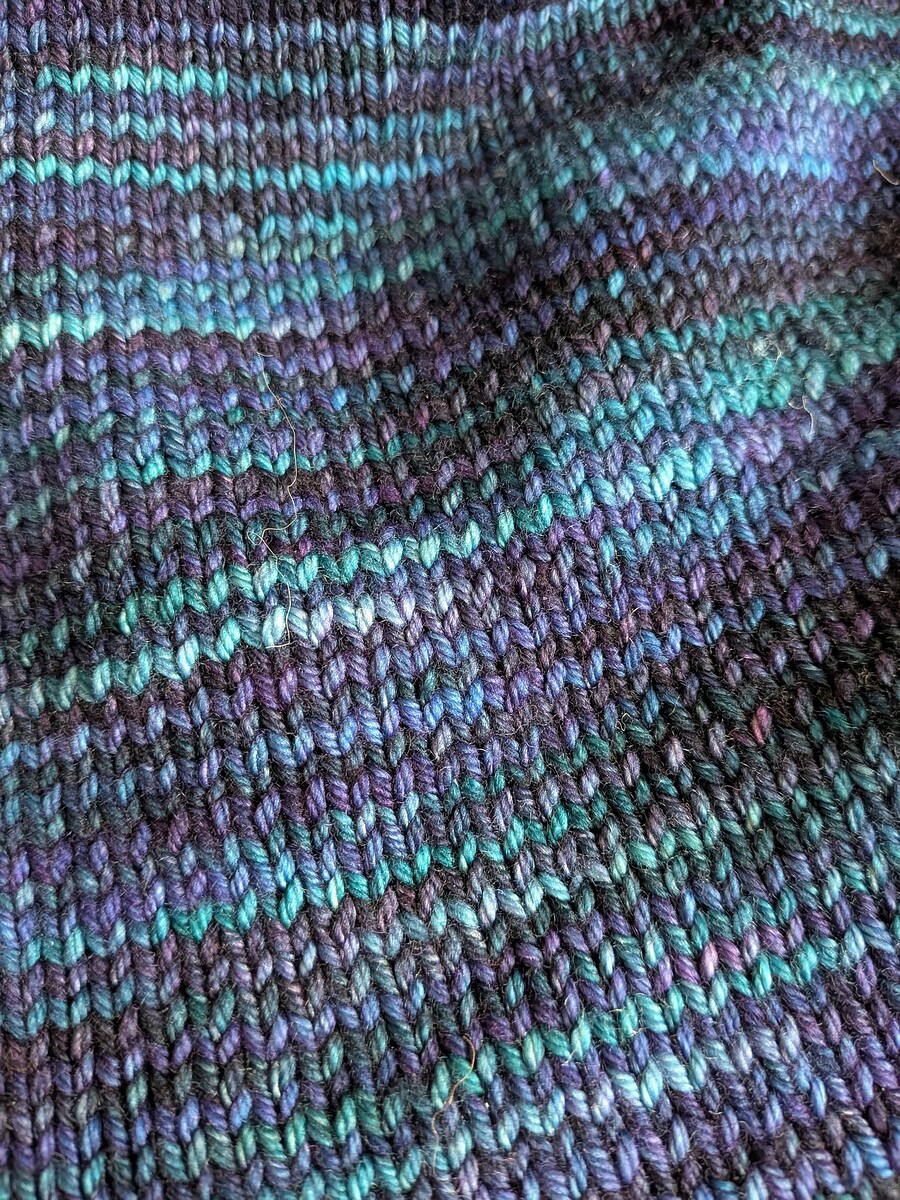Moved on from scarves and hats to a jumper, in Malabrigo Rios. I knitted a tension square, which was fine, though didn’t block that. Should I have done? Anyway, I have just wetted the front and back and it has stretched by around 20%. I have coaxed it back to the dry measurements and pinned it, hoping for the best. I am concerned by how much it stretched, after all my work. Does this mean it will be a nightmare to wash, even if it does spring back a bit?
Rios is a lovely yarn and one of my favorites. I’ve blocked and washed sweaters multiple times and not found that the gauge changes or that the sweaters stretch out of shape.
What pattern and designer were you using? What needle size?
You should always treat your swatch like you’ll treat the garment. Block it and hang it to dry, to mimic how it’ll be worn.
Hopefully the sweater will be just fine.
It was a pattern from Ravelry:
Size 4mm needles, as per the pattern.
It’s still drying out, but I’ll report back as to what it looks like then.
It was quite heavy when wet, and although I tried to handle it gently, with a towel etc., it could maybe have been the weight affecting it.
For future use: if I need to block a swatch then assuming it also stretched a bit, length-wise, how would I adjust a pattern/needles? Is there a link to a guide anywhere?
Unfortunately i have this from time to time despite washing my swatches to get the washed and dried gauge. You’re right the weight of the sweater even without being wet will pull on the knitting effecting the size, and when wet it’s even more tricky. It happens less with stockinette, more with garter or lace. You can try to mimic the weight of a sweater by hanging weights on your swatch as it dries instead of treating the swatch carefully you can be a bit more rough with it to see how row gauge holds up. You can also make bigger swatches which helps. You can also try to measure your knitting whilst it is hanging, not flat, some patterns advise this to get the length when it has its own weight pulling in it.
I like to jot down my gauge pre-wash as well as post-wash so that if there is a difference I can take it into account when knitting. I might give myself a note such as “Don’t panic that it’s too small when knitting!” Or “don’t be tempted to knit extra length when knitting” or “this will measure X cm when knitting but Y cm after washing”. Often I see people are trying on sweaters as they are worked but I find this unhelpful if it’s going to stretch after washing.
Most of my son’s sweaters don’t stretch out though.
After finding a difference in stitch gauge you can change needles and re-swatch. Row gauge usually isn’t quite as important to acheive as you can alter the number of rows you work to get the length you want.
For your current sweater, is it width or length which stretched out, or both?
A bottom up sweater that becomes too long can undergo knitting surgery to shorten it which may make it more wearable.
Sometimes knitters hang a dry swatch with a light weight (a clothes pin, a hair clip) on it mimic the way the knit fabric would be worn. Then you can measure the gauge on that swatch and adjust needle size to get close to the pattern gauge.
I like to spin a wet sweater in the washer spin cycle for a minute or so to get out most of the water then shape or pin it flat to dry. This is a large sweater and it will be heavy when wet but Rios washes and dries nicely this way.
Roxanne Richardson has several helpful videos on swatches that may help.
Do let us know how the sweater looks when it dries. Thank you for the pattern information. I was interested in the gauge and needle size but you’re in a good range with Rios.
Thanks, that’s really helpful. It’s the length that has stretched more than the width.
Thanks, I wasn’t sure whether to spin it or not. I’m not normally too precious with bought jumpers, but was being very cautious with this one as it’s got a lot of my time invested!
And rightly so. It has a lot of your time and effort in addition to this excellent yarn as a part of the fabric.
Thanks for the replies. My current plan is to wait for the front & back pieces to fully dry out and recheck. If it still looks baggy in the length then I may re-do the length before sewing up, as it would be a lot more of a pain to do it afterwards.
Good plan and fingers crossed!
Update: finished project. Beautifully soft yarn and the photos don’t do justice to the richness of the colours.
Beautiful! The pattern and your knitting plus Rios, perfect combination.


